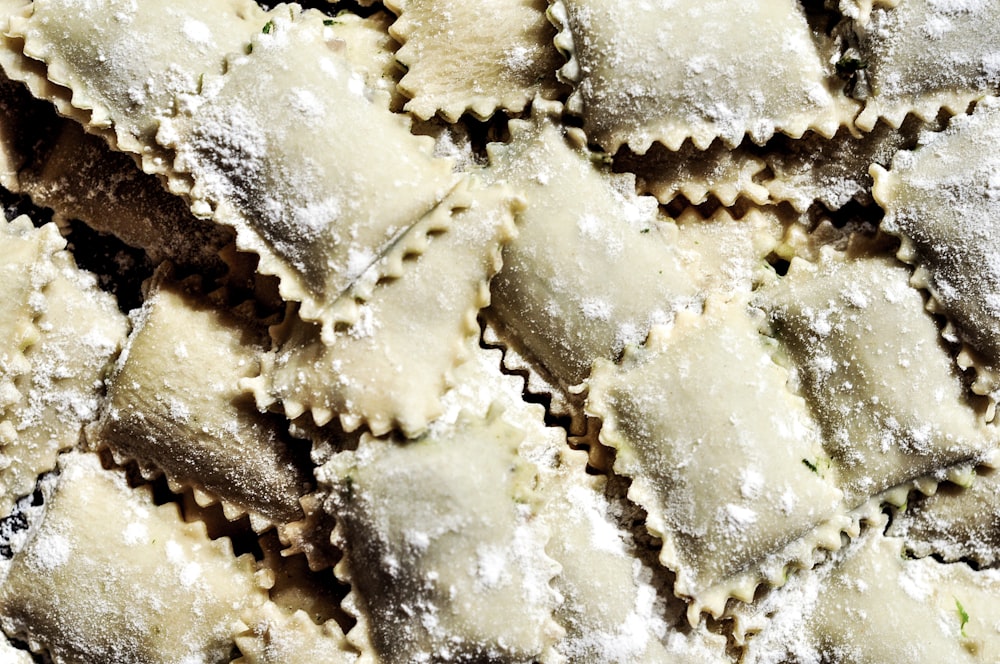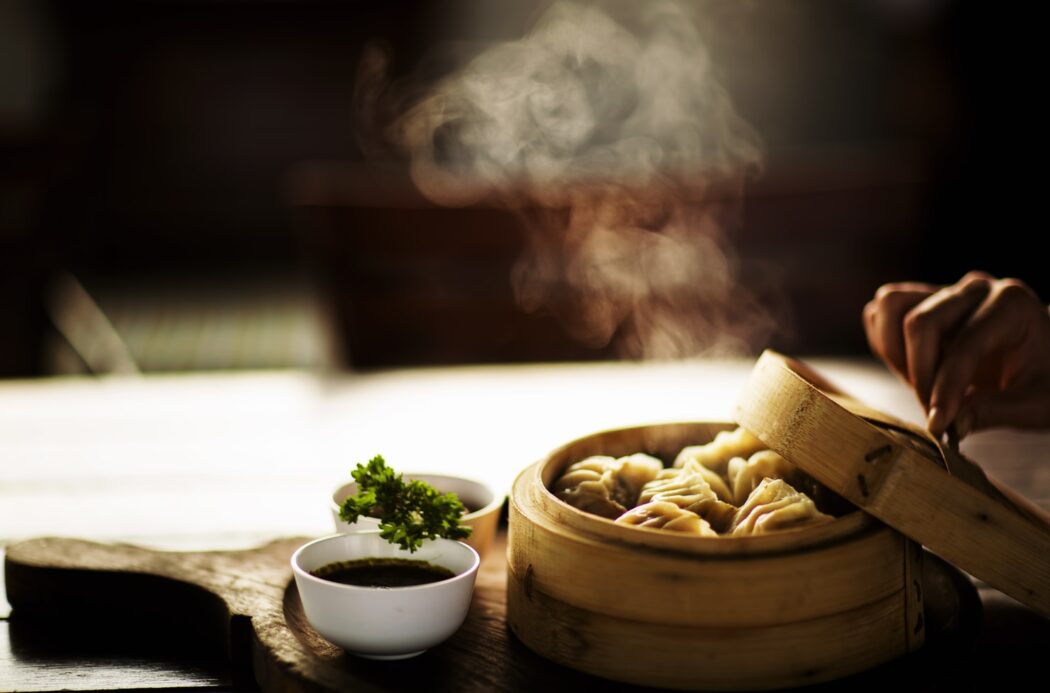Different cultures and countries have developed their own cuisine throughout time, often exchanging culinary techniques with each other. Sometimes patterns between multiple types of cuisines appear like a soft wrapper boiled, fried or steamed with something hot and delicious inside. Perhaps dumplings appear in a variety of cultures because of the warm, comforting feeling they create.
Dumplings remind many people of home and their own family’s culture. VALLEY has brought you three different traditional dumpling recipes to bring a taste of someone else’s kitchen into your own.
Gyoza

According to School of Wok, “Serving gyoza is supposed to bring wealth and prosperity to the provider, as the shape of these dumplings is reminiscent of yuan bao silver or gold ingots, which were used as currency at the time of the Ming dynasty.”
Gyoza, a fried thin-doughed dumpling filled with vegetables or meat, originated in China, but they have become more common in Japan. Gyoza can contain beef, pork, chicken, fish or vegetables like cabbage, celery, mushrooms, carrots or spinach. Try this recipe from Good Life Xplorers as an appetizer or side dish with a meal.
What You’ll Need
- 1 package gyoza wrappers
- 1 pound ground pork
- 3 green onions chopped finely
- 1-2 garlic cloves chopped finely
- 2 tsps grated ginger
- 1 tsp red miso paste substitute for soy sauce if not available
- 3 cups chopped napa cabbage chopped finely
- 1 tablespoon vegetable oil or sesame oil for frying
What You’ll Do
- Mix all the filling ingredients into a bowl and mix it with your hands until it is well combined.
- Open the gyoza wrappers and place a small amount of the pork mixture in the center of the wrapper. Dip your fingers in water and run it around the wrapper’s edge so it will stick together. Fold the wrapper in half, forming a half-moon and with your fingers, create pleats around the edge to close the gyoza.
- Turn heat to medium-low on your stove. Place half of the oil in a frying pan. Wait a few seconds until the oil is warm and place the gyozas flat side down. Fry it for 2 minutes without moving them.
- Pour water into the pan and close it with a lid to steam the gyozas. Cook for 8 minutes until the skin becomes soft and the water is all evaporated.
- Remove cover and let any remaining water evaporate. Add the extra oil and let the gyozas fry to 2-5 minutes. It’s important not to try to move them before at least 2 minutes as the bottom may be stuck to the pan and the skin will tear.
- Once the gyozas can be removed from pan. Let it rest for a couple of minutes as you make the gyoza sauce.
Ravioli

Ravioli is an Italian dish loved by many, although many may not think of it as a traditional “dumpling.” According to Cucinaventi, the classic ravioli recipe includes a filling of, “ricotta, meat, cheese, and vegetables. The filling is then sealed between two thin layers of egg pasta dough and typically served with a delicious tomato or cream-based pasta sauce.” The history of ravioli in Italy is dated back to the 14th century! The word itself, “ravioli,” is derived from an old Italian word “riavvolgere,” meaning “to wrap.” Check out this recipe from All Our Way to learn how to make your own ravioli.
What You’ll Need
For the filling:
- 2 eggs beaten
- 2 Tbs parsley chopped
- 12 oz beef chuck ground
- 12 oz pork sausage country style
- 16 oz ricotta cheese
- 1 cup parmesan cheese grated
- 1 Tbs olive oil extra virgin
- 1 tsp kosher salt
- 1 cup spinach leaves baby spinach chopped
For the pasta:
- 14 oz. all-purpose flour 3 ⅛ cups
- 4 eggs large
- 1 Tbs olive oil extra virgin
- 1 tsp Kosher salt
What You’ll Do
- To make the filling, fry the meat in olive oil until well browned. Drain the meat on paper towels. When the meat cools a little put it into a large bowl and mix in the chopped spinach. chopped parsley, beaten eggs and the rest of the ingredients, add salt and pepper to taste.
- Put the filling into the food processor bowl and pulse several times until the mixture is fine.
- Return the filling to the mixing bowl and refrigerate. (The filling is easier to work with when refrigerated.) The filling will give you enough for a double batch — making about 90 – 100+ ravioli. The filling can be frozen.
- To make the pasta, sift flour and salt into a mixing bowl. Gradually add eggs and oil to flour, mixing with a spoon. As the mixture becomes lumpy, begin to press together and knead with your hands. If mixture seems too dry and grainy, add one tablespoon of water at a time until the mixture holds together into a ball.
- Remove dough from the mixing bowl and begin to knead dough for 2 minutes on a lightly floured dough board or tabletop. Cover the dough with a bowl and let the dough rest for 30 minutes. Allowing the dough to rest will improve the texture of the dough.
- Use about one teaspoon of filling for each little pocket, and fill the ravioli.
- To cook the ravioli, bring a large pot of water to a boil. Salt the water. You want your water as salty as the sea.
- Add the ravioli in batches. About 10- 12 at a time. Don’t overcrowd. Bring the water back to a gentle simmer and cook for about 3-4 minutes. If the ravioli is frozen, cook for an additional minute. Remove with a slotted spoon or spider to a serving dish. Continue cooking the rest of the ravioli. Serve with your favorite sauce or just with extra-virgin olive oil, butter, sea salt, and freshly ground black pepper. Sprinkle with fresh herbs.
Pierogis

According to Culture, pierogis are a traditional Polish dumpling where noodle flour or pastry dough can be filled with a variety of things like different types of meat, potatoes, vegetables and cheese. The pierogi ruskie with potatoes and cheese seem to be the most popular type of pierogi today. Sometimes, there have even been sweet pierogis filled with fruit and topped with butter or powdered sugar, marking pierogis as a versatile and well-loved dish. Here is a recipe from All Recipes for pierogis.
What You’ll Need
- 4 ½ cups all-purpose flour
- 2 teaspoons salt
- 2 tablespoons butter, melted
- 2 cups sour cream
- 2 eggs
- 1 egg yolk
- 2 tablespoons vegetable oil
- 8 baking potatoes, peeled and cubed
- 1 cup shredded Cheddar cheese
- 2 tablespoons processed cheese sauce
- 1 dash onion salt to taste
- salt and pepper to taste
What You’ll Do
- In a large bowl, stir together the flour and salt. In a separate bowl, whisk together the butter, sour cream, eggs, egg yolk and oil. Stir the wet ingredients into the flour until well blended. Cover the bowl with a towel, and let stand for 15 to 20 minutes.
- Place potatoes into a pot, and fill with enough water to cover. Bring to a boil, and cook until tender, about 15 minutes. Drain, and mash with shredded cheese and cheese sauce while still hot. Season with onion salt, salt and pepper. Set aside to cool.
- Separate the pierogi dough into two balls. Roll out one piece at a time on a lightly floured surface until it is thin enough to work with, but not too thin so that it tears. Cut into circles using a cookie cutter, pierogi cutter, or a glass. Brush a little water around the edges of the circles, and spoon some filling into the center. Fold the circles over into half-circles, and press to seal the edges. Place pierogis on a cookie sheet, and freeze. Once frozen, transfer to freezer storage bags or containers.
- To cook pierogis: Bring a large pot of lightly salted water to a boil. Drop pierogis in one at a time. They are done when they float to the top. Do not boil too long, or they will be soggy! Remove with a slotted spoon.
Tweet us, @VALLEYmag, with your favorite type of dumpling!





